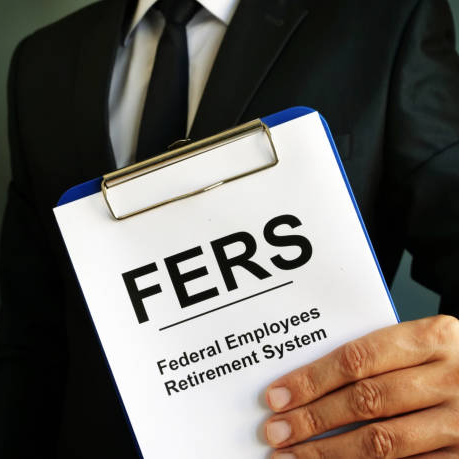Eligibility for FERS retirement.

Your eligibility to retire under the normal FERS (Federal Employee Retirement System) is determined by your age and years of service. You must fulfill one of the three primary minimum age and service requirements for an “instant” unreduced pension. While there are other considerations in retirement planning, such as income demands, social security strategies, and health benefits, the fundamentals are an excellent place to start. Here is what you need to aim for as regards retiring as a FERS employee.
1. Minimum Retirement Age (MRA) with a minimum of 30 years of service
The earliest a normal FERS employee can retire without incurring a penalty (apart from using an “Early Out” option) is at MRA with at least 30 years of service. The FERS employee’s year of birth determines the minimum retirement age. The following graph illustrates that age is based on the year of birth:
|
If you were born |
Your MRA is |
|
Before 1948 |
55 |
|
In 1948 |
55 and 2 months |
|
In 1949 |
55 and 4 months |
|
In 1950 |
55 and 6 months |
|
In 1951 |
55 and 8 months. |
|
In 1952 |
55 and 10 months |
|
From 1953-1964 |
56 |
|
In 1965 |
56 and 2 months |
|
In 1966 |
56 and 4 months |
|
In 1967 |
56 and 6 months |
|
In 1968 |
56 and 8 mo |
|
In 1969 |
56 and 10 months |
|
In 1970 and after |
57 |
You are also eligible for the supplements if you retire at MRA with at least 30 years of service. The OPM supplement fills the income gap between retirement and the age of 62 when one becomes eligible for social security.
Additionally, retirees that meet the threshold are permitted to retain their FEHB and FEGLI benefits (Federal Employee Group Life Insurance). Keep in mind that FERS retirees do not receive any cost-of-living adjustments (COLA) until they reach the age of 62.
2. Retiring at 60 with a minimum of 20 years of service
A reasonable “middle ground” option to still be eligible for a penalty-free pension for workers who may have started their government employment later is to retire at age 60 with at least 20 years of service. These retirees also meet the prerequisites for the supplement and are eligible to keep their life insurance and health benefits. Additionally, it moves them one step closer to becoming eligible for a cost-of-living increase. Working for two more years and retiring at age 62 with at least 20 years has even more benefits.
3. 62 years old and with at least five years of service
You also qualify for an “immediate” unreduced pension if you retire at age 62 and have at least five years of service. There is no supplement if you retire at age 62 because you can begin receiving social security benefits immediately. After all, the social security age has been attained in this case. Your life insurance and health coverage would both follow you into retirement. You do not have to wait for a cost of living adjustment, which is a major benefit of retiring at age 62.
Pension Calculations
Any FERS employee who retires under one of the conditions aboveâ€â€MRA with 30 years of service, Age 60 with a minimum of 20 years of service, or Age 62 with at least five years of serviceâ€â€receives 1% of each year of service toward their high-3, which is the highest average three years of the base plus locality pay at any time during their career.
Consider this: With 32 years of service and an MRA at age 57, Susan has a high-3 of $65,000. Susan would receive 32% of the $65,000 (1% multiplied by her years of service) of $65,000 (which is her high-3).
$65,000 x 32% = $20,800 annually
$20,800/12 = $1,733.33 monthly
Note that the income from the supplement Susan would be eligible for is not included in this scenario.
4. 62 years old with at least 20 years of experience
Employees with at least 20 years of service and reach 62 are given a higher pension calculation. Instead of receiving 1% for each year of service, this employee receives a 1.1% calculation, which is 10% higher.
As an illustration, Jude is 63 years old, has 25 years of service, and has a high-3 of $80,000.
Jude would receive $80,000, or 27.5% of it (years of service multiplied by 1.1%) of $80,000 (which is his high-3).
($80,000 x 27.5%) = $22,000 annually
$22,000/12 = $1,833.33 monthly
Jude would not receive a supplement because he retired at the age of 62.
Contact Information:
Email: [email protected]
Phone: 3604642979
Bio:
After entering the financial services industry in 1994, it was a desire to guide people towards their financial independence that drove Aaron to start Steele Capital Management in 2013. Armed with an extensive background in financial planning and commercial banking coupled with a sincere passion for helping people, Aaron has the expertise and affinity for serving the unique needs of those in transition. Clients benefit from his objective financial solutions and education aligned solely with
helping them pursue the most comfortable financial life possible.
Born in Olympia, Washington, Aaron spent much of his childhood in Denver, Colorado. An area outside of Phoenix, Arizona, known as the East Valley, occupies a special place in Aaron’s heart. It is where he graduated from Arizona State University with a Bachelor of Science degree in Business Administration, started a family, and advanced his professional career.
Having now returned to his hometown of Olympia, and with the days of coaching his sons football and baseball teams behind him, he now has time to pursue his civic passions. Aaron is proud to serve on the Board of Regents Leadership for Thurston County as the Secretary and Treasurer for the Morningside area. His past affiliations include the West Olympia Rotary and has served on various committees for organizations throughout his community.
Aaron and his beautiful wife, Holly, a Registered Nurse, consider their greatest accomplishment having raised Thomas and Tate, their two intelligent and motivated sons. Their oldest son Tate is following in his father’s entrepreneurial footsteps and currently attends the Carson College of Business at Washington State University. Their beloved youngest son, Thomas, is a student at Olympia High School.
Focused on helping veterans and their families navigate the maze of long-term care solutions, Aaron specializes in customized strategies to avoid the financial crisis that care related expenses can create. Experience has shown him that many seniors are not prepared for the economic transition that takes place as they reach an advanced age.
With support from the American Academy of Benefit Planners – an organization with expertise and resources on the intricacies of government benefits – he helps clients close the gap between the cost of care and their income while protecting their assets from depletion.
Aaron can help you and your family to create, preserve and protect your legacy.
That’s making a difference.
Disclosure:
Investment advisory services are offered through BWM Advisory, LLC (BWM). BWM is registered as an Investment Advisor located in Scottsdale, Arizona, and only conducts business in states where it is properly licensed, notice has been filed, or is excluded from notice filing requirements. This information is not a complete analysis of the topic(s) discussed, is general in nature, and is not personalized investment advice. Nothing in this article is intended to be investment advice. There are risks involved with investing which may include (but are not limited to) market fluctuations and possible loss of principal value. Carefully consider the risks and possible consequences involved prior to making any investment decision. You should consult a professional tax or investment advisor regarding tax and investment implications before taking any investment actions or implementing any investment strategies.
Popular posts

Special Category Retirement Plans...
Key Takeaways Special retirement...

FEHB or Medicare: Can...
Key Takeaways Federal retirees...
Free Retirement Benefits Analysis
Federal Retirement benefits are complex. Not having all of the right answers can cost you thousands of dollars a year in lost retirement income. Don’t risk going it alone. Request your complimentary benefit analysis today. Get more from your benefits.
I want more



